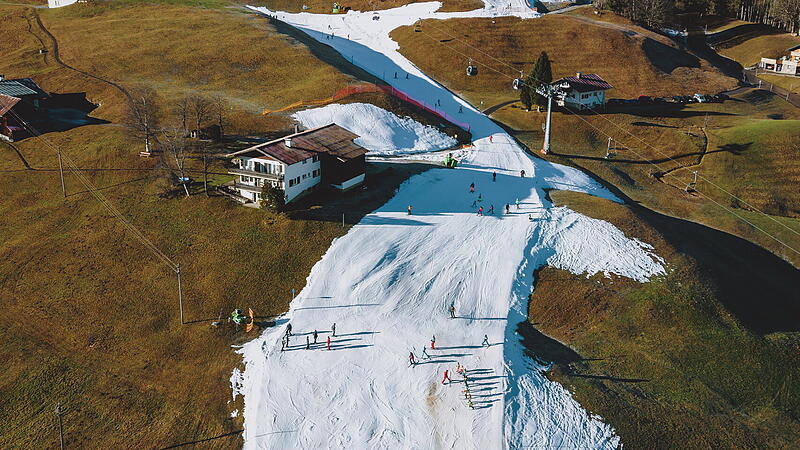Image: EXPA/ JFK (APA)
Winter is over on March 1st, at least from a meteorological point of view. After a spring-like holiday week, the cold has set in again. Orlik expects wintry temperatures to continue for the next ten days. “As a climatologist, I’m happy,” he says. The past three months have been “unusually warm” overall. Austria has had the sixth warmest winter in the 256-year history of measurements, as shown by data from Geosphere Austria (formerly ZAMG).
A measuring station that has been recording weather data since 1767 is located in Kremsmünster. This winter is one of the seven mildest there. “Even before the 21st century there were outliers. 1934 was the warmest December, 1966 the warmest February,” says Alexander Orlik. At that time there were single, warm months. Today, the mild temperatures, caused by global warming, last longer. One warm month follows the other and the cold air dips last very briefly. This is reflected in Geosphere Austria’s balance sheet: The winter in Upper Austria was 1.8 degrees too warm.
minus 25 degrees
Last winter brought the first frosty phase during the time of the Christmas markets in mid-December. The fourth Sunday in Advent was particularly difficult, as in freetown minus 18.7 degrees were registered. It was even colder at the beginning of February, during the second cold air onset Dachstein Glacier: The thermometer showed minus 20.9 degrees at an altitude of 2520 meters. Austria’s cold poles, which are below 1000 meters above sea level, were Schwarzau in Freiwald (minus 24.7 degrees on February 7th) and Radstadt (minus 19.9 degrees on December 13).
Plus 22 degrees
On the whole, the “arctic” days were limited. Instead, the winter brought some phases with highs of around 20 degrees. On New Year’s Day, 22 weather stations in Geosphere Austria set new January heat records. On February 18, 2023 there was in innsbruck a new monthly record for Tyrol with 21.7 degrees. The highest temperature was 22.1 degrees in casting (Burgenland) on February 21st. In Upper Austria was the Innviertler municipality Aspach leader. The old year ended there at an unusual 18.3 degrees.
The snow was a long time coming. If you compare the records of the past 256 years, you would need twice as many snow days for a normal winter. In Salzburg and North Tyrol in particular there was a lack of precipitation. It was 15 to 60 percent drier there than in an average winter. “It wasn’t until the beginning of February that there was some fresh snow,” says Orlik.
There were large regional differences. In the south of Austria and in places in the east there was 15 to 45 percent more precipitation, in the area of the Koralpe and the Seetal Alps even by 45 to 60 percent. Even in Upper Austria one cannot speak of a dry winter, says the climatologist.
And what does the beginning of spring hold in store? “Anything is possible, from plus 25 degrees to minus ten degrees.” The winter jacket will be needed at least this week and next.
Source: Nachrichten




